So you’re at the supermarket, standing in the chilly wasteland of the meat aisle. You’re looking at all the options and wondering how do you really know which brand or label is better for the environment, the animal and your body. Perhaps wondering if there is any substantial difference at all.
The biggest problem with meat in the grocery store is a complete lack of transparency. Large meat companies contract with thousands of different farm operations. Inevitably, all vary in their ethical practices. There is no way to tell from the meat in the package which farm or meat packing plant the it came from, or even which state or country. In 2016, federal Country of Origin Labelling laws (COOL laws) were loosened so that ground beef and pork no long had to be labelled with the country where they were produced.
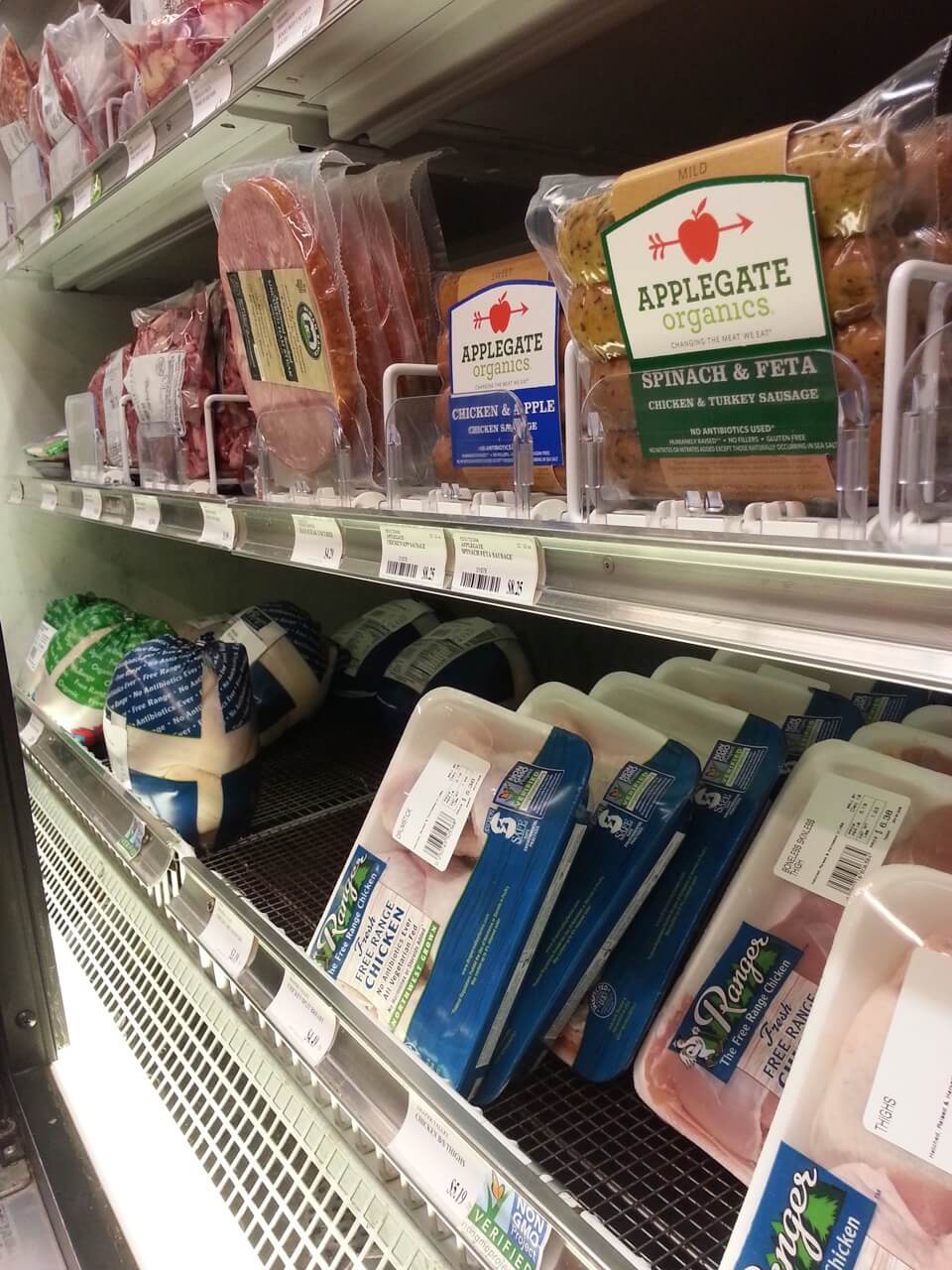
The industry is actively invested in concealing the details of their operations, while advertising images of happy animals, and using words like “natural” and “pastured.” With this intentional misdirection and concealment, consumers like you and me have to rely on advertising, image and labelling to discern the quality of the meat.
However, there are a few meaningful differences and labels like organic that change the quality of the meat. Let’s unpack the various factors that help you make choices about buying meat in the grocery store.
Packaged Meat Brands
The most obvious difference between cuts of meat is the company that sold it. As with most of our consumer choices, typically we buy one brand of meat, and keep buying it unless something drastic changes our habits.
However, the difference between brands is not always as big as companies would like us to think. For example, Tyson foods owns the brands Jimmy Dean, Sara Lee, State Fair, Aidells, and Hillshire Farms, just to name a few. In fact, four companies, including Tyson, produce 85% of America’s beef, and a majority of pork. Just three companies, also including Tyson, dominate chicken production.
People choose a particular brand for lots of reasons—maybe it is the only one carried in your local grocery. Maybe it is one you ate as a kid. Maybe you read an article about the company’s unique approach to animal health.
You might choose to avoid companies that have been accused of violating human rights, having poor environmental practices, or companies that have had numerous product recalls. A Google search will turn up damning reports about all major meat processing companies. If you find something worrying, be sure to look for a second source to verify that information. Not all whistle-blowing journalism is created equal.
The reality is that meat companies have so many products and provide so little information about them, that a brand name is not a good metric for meat quality. The question then becomes, what claims and labels do we trust?
Certifications and labels on food fall into two broad categories: third-party certifications, and federally-regulated claims.
Third-Party Certification Labels
Third-party certifications are awarded by groups—both for- and non-profit—that do their own examinations and then allow a company to use their label. Examples include:
- Non-GMO Project Verified
- Salmon Safe
- Certified Humane
- Animal Welfare Approved
- The 5-Step Animal Welfare Rating Program
The rigor behind these verifications varies from organization to organization, so before relying on any of these labels it is worth researching the organization that provides it. These organizations know they are under scrutiny and they are eager to tell you about their rigorous standards.
From the homepage of any third-party certification site it should be easy to find their requirements and their verification process. Let’s look at a two of the most common third-party labels.
Non-GMO Project
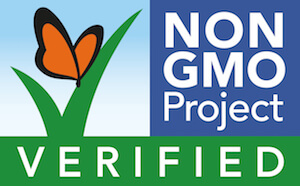
Non-GMO Project is a non-profit which uses a blue label with a butterfly that you’ll see in all aisles of the grocery store, not just the meat section. With a list of products a mile long, Non-GMO Project proudly claims to be the “most trusted seal for GMO avoidance,” although most of the products it labels are also certified organic, which makes it redundant, since organic regulations prohibit GMOs.
To verify products, Non-GMO Project contracts with four different laboratory companies that evaluate GM content in food. The labs are third-party for-profit companies in their own right, although you’ve probably never heard of any of them. They specialize in genetic testing and “standard-setting” for food of all kinds.
The labs send verification back to Non-GMO Project, which issues their ubiquitous butterfly label. Once labeled Non-GMO, approved products have to be re-verified annually, and the product owner pays a licensing fee, which supports the Non-GMO organization.
Certified Humane
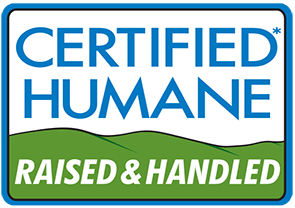
The Certified Humane label is an extremely rigorous standard for animal welfare. It is a more complicated and nuanced standard than the Non-GMO label. They are a non-profit, and their own team conducts all evaluations. This lessens the chance of conflicts of interest with businesses.
Certified Humane has separate standards for each variety of animal. The requirements for each type of animal operation is dozens of pages long.
Each set of standards is compiled by a large team of veterinarians and PhDs from agricultural universities across the country. They include specifications for housing, feed, medical care, and humane slaughter. For notably smart, curious animals like pigs, the requirements include “enrichment”—toys and other stimulation to improve quality of life.
Each farm operation is inspected by a Certified Humane employee after an evaluation of documents. I personally have a great deal of trust and respect for the Certified Humane label, and my partner and I are working hard at our hog operation toward meeting their exacting standards.
Federal Certifications
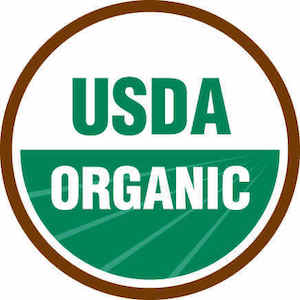
These are labels regulated and enforced by state and federal agencies. Depending on your attitude toward government, you may find these more or less reliable than third-party certification. Regardless, they are consistent throughout the country, and requirements are clear.
There is a common misconception that labels like “all-natural” are not defined, supervised or enforced by any regulatory agency. In fact, these fall into a category called “special claims,” which is loosely regulated by an agency of the Food Safety Inspection Service (FSIS).
These statements include common labels on meat, like “antibiotic-free”, “vegetarian-fed”, “cage-free” and “local”. To put these labels on a product requires documentation, and verification through FSIS. Not all terms regulated are equally well-defined, and the verification relies on a paper trail rather than farm inspections, but it is worth knowing that these terms are regulated, however loosely.
By far the most visible and trusted certification is the organic label. The word “organic” is entirely regulated by the United States Department of Agriculture (USDA), which is separate from the FSIS. It is illegal to use the word, much less the logo, on non-certified products. Certified organic farms have annual inspections and work closely with a regulator to ensure that all parts of their operation meet organic standards.
Is The “Organic” Label Worth Paying Extra For?
Organic meat is markedly more expensive than other meat, including products that claim to be pasture-raised and antibiotic-free. So how much of a difference does that label really make, and is the high price worth it?
The biggest difference between organic and non-organic animals is that organic livestock are fed only certified organic feed. So if you are worried about your environmental impact, choosing to eat organic meat will significantly reduce the toxic chemicals used in the production of grain that was fed to the animals on your table.
Organic grain is a major factor in the high cost of organic meat. Organic feed costs anywhere from 30% to 100% more per pound.
The other major difference is how the animals are treated medically and what medicines can be administered. A concern for many consumers is feeding prophylactic antibiotics as a routine preventative measure against illness, which can become common in crowded, confined animal operations.
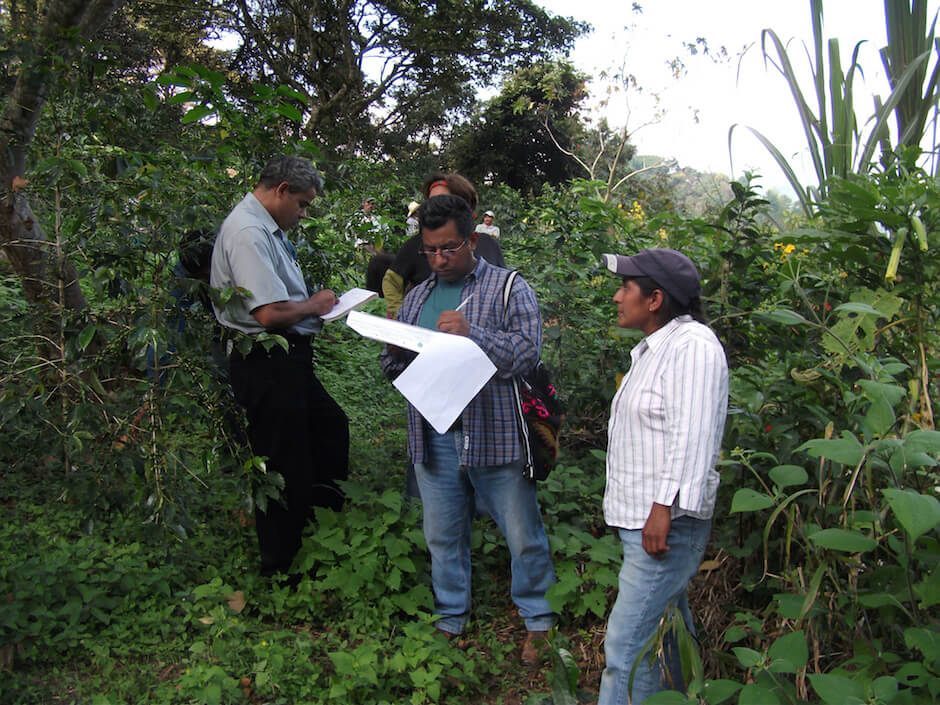
The unverified label “antibiotic-free” addresses this, but an organic label guarantees that the animals have never been fed antibiotics, or other kinds of pesticides. However, if an organic animal gets sick there is no attempt to treat them organically. They are either killed, or treated with conventional medicine and then sold as conventional meat. That choice depends on the structure of the farm, and how easy it is to move an animal from organic to conventional production for the rest of its life.
There are a few animal welfare stipulations that are part of the organic label. They vary depending on the variety of animal, and on the ethics of the farmer. It’s not uncommon for producers to follow the letter of the law rather than the spirit.
For example, organic standards for poultry state that all birds must have access to the outdoors. In response to this requirement, some producers build small doors in just one part of a chicken house that is hundreds of square feet, and most chickens never even find the outdoor area.
On the other hand, for organic cattle, regulations are stricter. In 2010, the USDA clarified the organic standards to state that all organic ruminants must be on pasture “during the grazing season” at least 120 days out of the year. That is a more meaningful requirement that the organic certification enforces.
If you are willing to invest the time, read up on the organic requirements for various kinds of meat production. Familiarize yourself with what organic really means, and you will be able to judge for yourself how when the organic label is worth it, and when other labels will suffice.
Eating well and buying food that is good for our bodies, our planet, and the animals can feel like an overwhelming task. But labels and certifications are there to help you. If you see an unfamiliar label, take the time to whip out your phone and look it up—you will know lots more about what you buy and what you eat.

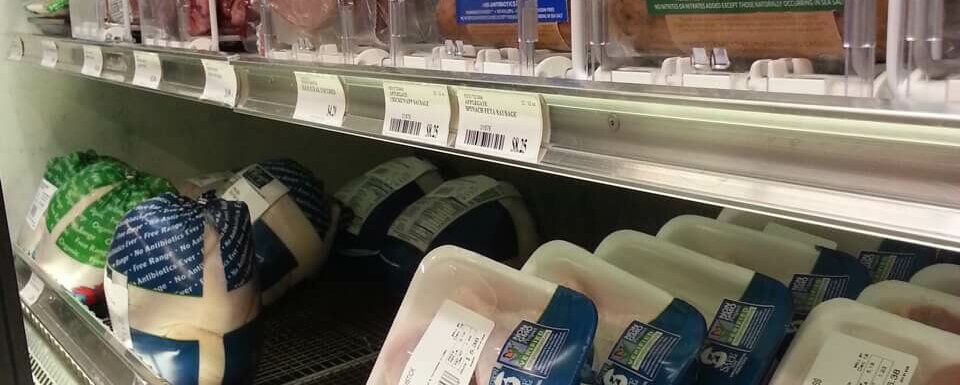


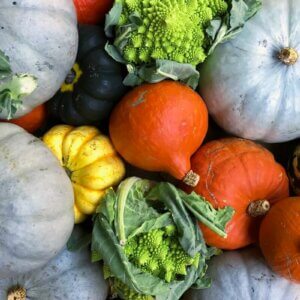




















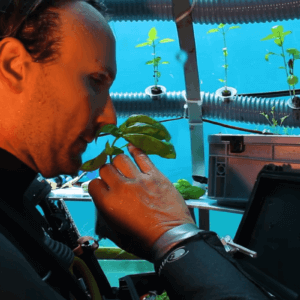
















I found this article very helpful, thanks for taking the time to research and write it
Hi! This article was amazing! I’m curious to know if meat markets like La Michoacana also have less of an environmental impact as the meat is somewhat processed there. As someone who is trying to be more mindful about their environmental footprint, I just want to make sure I’m accessing the resources available to me.